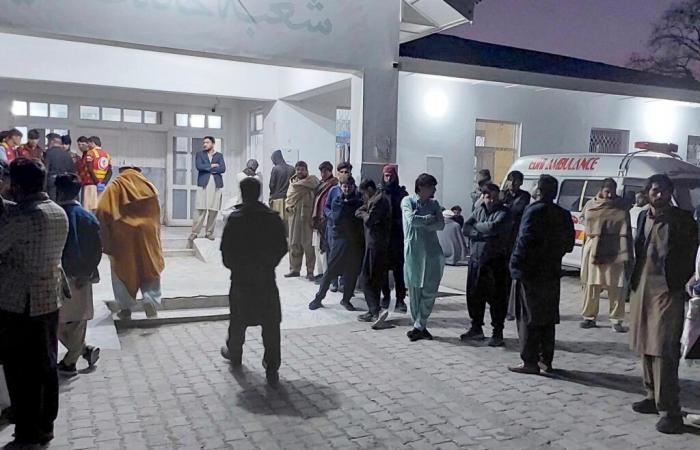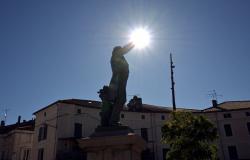At least 43 people, including 7 women and 3 children, were killed on Thursday and 16 were injured – 11 of them in a “critical condition” – during the latest episode of violence between Shiites and Sunnis which regularly mourns the northwest of Pakistan.
“Two convoys carrying Shiites (…) were targeted » in Kourram, in the Khyber Pakhtunkhwa province bordering Afghanistan, Javed Ullah Mehsud, a member of the local administration, told Agence France-Presse (AFP), who clarified that “most of the victims were Shiites”. A police officer on site confirmed the death toll to AFP, on condition of anonymity, specifying that police officers had been killed.
“Around ten attackers fired blindly from both sides of the street”he added, while, for months now, families of both faiths have only been traveling in areas inhabited by the other camp under police escort.
“The mobile phone network was cut, a curfew was imposed on the main road” and the traffic is “suspended”said another member of the local administration on condition of anonymity.
Read the decryption: What are the differences between Sunnis and Shiites?
Read later
“Suddenly gunshots rang out (…) two bullets hit me in the stomach and leg”told AFP Ajmeer Hussain, who had been waiting for a week for the departure of a convoy under escort to reach Peshawar, the provincial capital, further east.
The shooting lasted “about five minutes” et “I said my last prayers because I thought my time had come”continues this 28-year-old Pakistani man, now hospitalized. “I lay down at the feet of the two passengers sitting next to me. They were shot and died instantly.”he reports again. “Twenty minutes later, I heard the voices of local residents who took me out of the vehicle. »
This attack of“a convoy of innocent citizens is an act of pure brutality”reacted the Prime Minister, Shehbaz Sharif. Mr. Mehsud asserts that a jirga, a tribal council, “was summoned to restore peace and order”. In the mountainous region, where the tribal code of honor often prevails over the law that the State struggles to impose, these meetings serve to achieve truces.
Disputes over land
From July to October, 79 people died in violence between Shiite and Sunni tribes in this region, according to the Human Rights Commission of Pakistan (HRCP), the main NGO defending freedoms in the country.
The Memorable World
Test your general knowledge with the editorial staff of “Le Monde”
Test your general knowledge with the editorial staff of “Le Monde”
Discover
Each time, tribal and sectarian clashes break out, using light or heavy weapons, notably mortar shells, then cease when a truce is struck by a jirga. A few weeks or months later, violence breaks out again.
Kourram was thus bereaved in July, September and October by these clashes between tribes of different faiths. In particular, they are fighting over land. In October, 16 people, including 3 women and 2 children, were killed during an attack on a Sunni convoy protected by paramilitaries.
The HRCP urges the authorities to “bend over urgently” on the fate of Kourram, in “humanitarian crisis”denouncing the “alarming frequency of these clashes”. “The fact that local rival groups clearly have access to heavy weapons indicates that the state has not been able to control the flow of weapons in the region”regrets the NGO.
During this week, several attacks shook the mountainous northwest of the country, killing at least 20 soldiers, while seven police officers were kidnapped for an entire day.
“The prolonged trauma and violence to which residents have been subjected for over a year must not become normal”warns the HRCP. In Pakistan, a Muslim country with a Sunni majority, Shiites have long claimed to be victims of discrimination and violence.
See also | Understanding the opposition between Shiites and Sunnis in the Middle East
Read later






